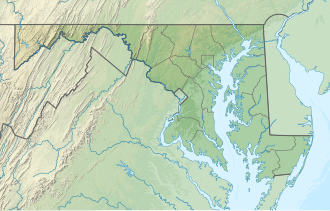History
The 50-acre (200,000 m2) reservoir was completed in 1858 by the United States Army Corps of Engineers (USACE) as part of the Washington Aqueduct project. [3] It began providing water on January 3, 1859. [4] Initially the reservoir provided water to the city from the adjacent Little Falls Branch until the aqueduct construction was completed. Regular water service from the Potomac River source through the aqueduct commenced in 1864. The reservoir was modified in 1895 and 1935 to improve water quality and increase water supply. [5] : 75, 99
In the 1920s a water purification plant was built adjacent to the reservoir. The rapid sand filter plant began operation in 1927. [5] : 101–105 [6]
In 1942, the headquarters of the Army Map Service was established on the grounds adjacent to the reservoir; several buildings constructed in the 1940s still exist. In 1946, its headquarters moved to the nearby Sumner Site, which is today the Intelligence Community Campus-Bethesda. [7]
Until the early 21st century, the semi-solid residuals (sludge) produced by the treatment plant were periodically discharged to the Potomac River. The U.S. Environmental Protection Agency (EPA) required USACE to halt most of these discharges, and a residuals handling facility was built on site, which went into operation in 2012. [8] [9]
This page is based on this
Wikipedia article Text is available under the
CC BY-SA 4.0 license; additional terms may apply.
Images, videos and audio are available under their respective licenses.



